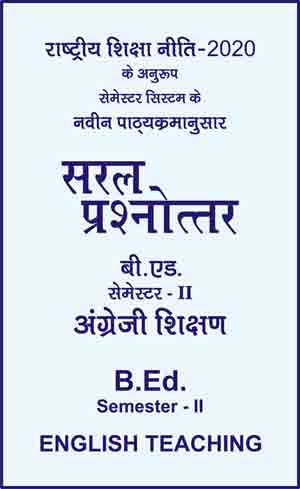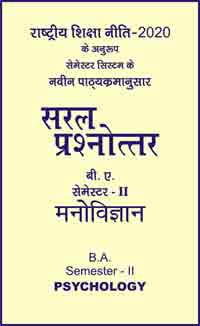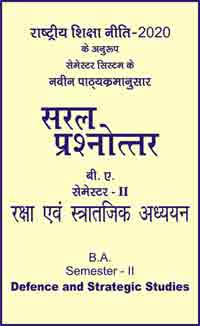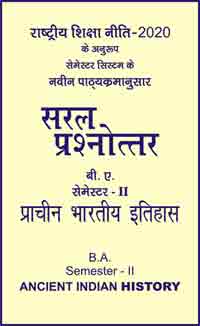|
बी एड - एम एड >> बीएड सेमेस्टर-2 अंग्रेजी शिक्षण बीएड सेमेस्टर-2 अंग्रेजी शिक्षणसरल प्रश्नोत्तर समूह
|
5 पाठक हैं |
||||||
बीएड सेमेस्टर-2 अंग्रेजी शिक्षण - सरल प्रश्नोत्तर
Question- Draw an outline to teach a lesson of prose.
Ans.
Teaching of Prose :- According to the Herbartian approach, there should be the following steps in teaching of a prose lesson :
(i) Preparation :- The teacher should adequately prepare himself to teach the topic of prose. He should plan before teaching. During teaching he should pay attention to the following points –
(a) Teaching-learning Aids – The teacher should use the various teaching learning aids so that he can make the lesson interesting and enable the students to understand the lesson. The teacher may use ordinary classroom equipments – chalk, duster, black-board etc. He can also use other aids, like – charts, maps, model, tape-recorder, projector etc.
(b) Previous Knowledge – The teacher should know how much knowledge students already possess regarding the lesson so that he may impart new knowledge to them by linking it to their previous knowledge.
(c) Introduction :- A teacher should be very careful about introducing the subjects matter. It should be based on the previous knowledge of the students. It may be done in number of ways such as –
• by putting direct questions.
• by narrating an interesting story.
• by showing a chart or model.
• by showing tape-recorder, slides, films etc.
(d) Statement of Topic :- After introduction, and arise of problematic question, the teacher should declare the topic and should mention it on black-board.
(ii) Presentation :- It is the main part of lesson plan. The teacher can divide the lesson into a number of units for arousing interest of the students. The following sub-steps should be followed in these units.
(a) Model reading performed by the teacher.
(b) Pronunciation drill also performed by the teacher.
(c) Loud or imitation reading done by the students.
(d) Exposition and explanation of the matter is given by the teacher.
This may be done further in following ways :–
• direct method.
• translation method.
• usage method.
• contrasted word method.
• derivation method.
(iii) Silent Reading :- The teacher will ask the students to read the taught unit silently and he will supervise the class. The purpose of silent reading is to enable the students to read silently. The teacher should ensure that the lips of the students should not move and they should not murmur while undertaking silent reading. He should also fix time limit for silent reading.
(iv) Comprehension Questions :- Testing of comprehension level of the students can be ensured only by asking questions to them. Its purpose in to ensure that the students have been acquainted with the meanings, general idea of the passage, its references and have acquired ability to use the topic. This may be done in following ways :–
• by asking questions on main portions of the passage.
• by asking meanings.
• by asking the central idea of the passage.
• by asking to describe the passage in their own word.
• by asking idioms, phrases etc. of the passage.
(v) Recapitulation :- Recapitulation is similar to the comprehension questions, but the objective is different. While short questions are asked in the comprehension questions, long questions or story are asked in recapitulation. The language of these questions should be easy. Questions should be properly distributed among the students. If any student does not understand the question, the teacher may take help of mother tongue to explain it. The teacher may write these questions on the black-board or the roller board.
(vi) Black-board Work :- Black-board is an important tool in the hands of a teacher for communication. It contains the following information :–
• marginal enteries.
• words of pronunciation drill.
• table of exposition work.
• difficult words with their meaning.
• home work or home assignment.
(vii) Home assignment :- The students must be given adequate home assignment by the teacher. It will test whether the students have been learnt the lesson. It may be given in the following forms :-
• To remember the meanings and spellings of new words.
• To use of words in sentences.
• To answer the questions.
• To write the gist of the passage.
• To fill in the blanks.
• To explain words, phrases and idioms.
• To translat the passage into mother tongue.
• To describe the passage in their own words.
• To write the moral of the passage in few lines.
|
|||||













